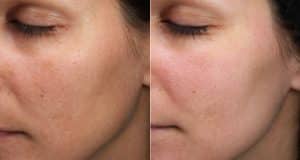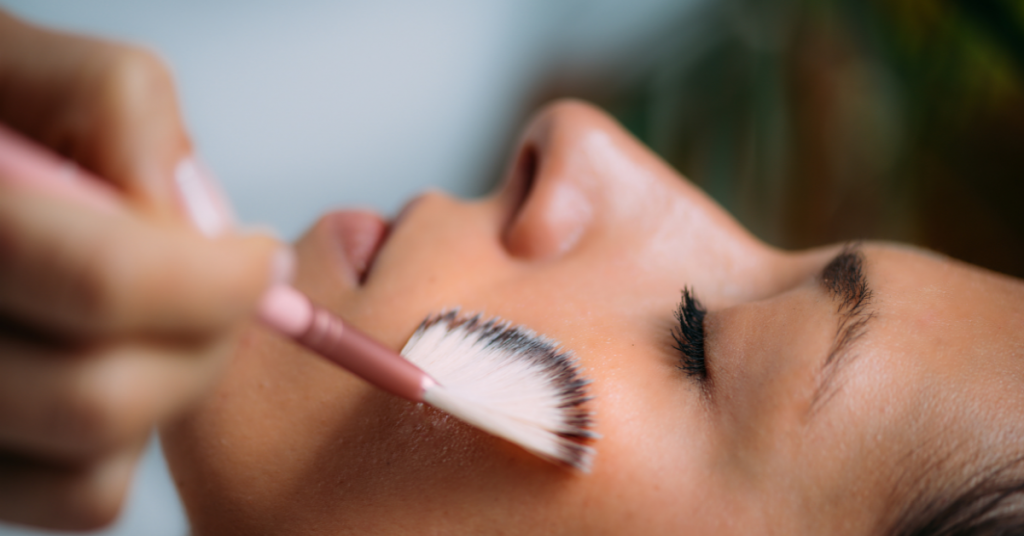
Is Moxi® Laser Treatment Right for You?
When considering any cosmetic treatment, it’s essential to determine if it’s the right fit for your skin and your goals. Moxi® Laser Treatment could be

The pursuit of flawless, radiant skin is a journey that many of us embark on. We try various skincare products and treatments, hoping to uncover the secret to a glowing complexion. One such treatment that has gained popularity in recent years is the chemical peel.
But what exactly are chemical peels? Chemical peels remove dead skin cells from the surface of the skin. They are a type of exfoliation.
This process uses a solution. This process reveals fresh, rejuvenated skin underneath, resulting in a smoother, more youthful appearance.
A trained professional typically performs chemical peels in a dermatologist’s office or a medical spa. The process begins with a thorough cleansing of the skin to remove any dirt or oil. Next, apply a chemical solution to the face to treat specific issues like lines, wrinkles, acne scars, or dark spots.
The solution stays on the skin for a set time and breaks down the bonds between dead skin cells. Finally, we neutralize and remove the solution, revealing fresh, glowing skin.
Chemical peels offer a wide range of benefits for the skin. They can improve the texture and tone of the skin, making it appear smoother and more even. This is particularly beneficial for those dealing with acne scars or uneven pigmentation.
Chemical peels can boost collagen, making skin plumper and reducing the look of lines and wrinkles. They can clear pores and reduce breakouts, making them a good choice for people with acne-prone skin.
Another major benefit of chemical peels is their ability to enhance the effectiveness of skincare products. Chemical peels remove dead skin cells, helping serums, moisturizers, and treatments to work better by penetrating deeper. This means that your skincare routine will be more effective overall, and you’ll see better results from the products you use.
Numerous varieties of chemical peels exist, from gentle to intense. Your unique skin issues and objectives will determine the peel that suits you best. Here are some of the most commonly utilized types of chemical peels:
Before getting a chemical peel, there are several steps you can take to prepare your skin for the treatment. To reduce complications, avoid too much sun or using tanning beds before your appointment. Stop using retinol or exfoliating products a week before your peel to avoid increased skin sensitivity.
It’s also a good idea to have a consultation with a dermatologist or skincare professional to discuss your goals and expectations. They can evaluate your skin type and suggest the most appropriate kind of peel for you. Finally, make sure to follow any pre-peel instructions provided by your chosen professional to ensure the best possible results.
On the day of your peel, you’ll come to the office and we will escort you to a treatment room. After cleansing your skin, we will apply the chemical solution to your face using a brush or cotton applicator.
You may experience a slight tingling or burning sensation, but this is normal. The solution will stay on your skin for a set time. You might get a small fan to make you feel more comfortable.
Then we will neutralize the solution and remove it from your skin. They may apply a soothing cream or mask to help calm the skin and reduce any redness or inflammation. Finally, they will provide you with detailed aftercare instructions and recommend products to use during the healing process.
Proper aftercare is crucial for ensuring optimal results and minimizing the risk of complications after a chemical peel. In the days following your treatment, it’s important to keep your skin hydrated and protected from the sun. This means using a gentle cleanser, moisturizer, and sunscreen as recommended by your dermatologist. You should also avoid picking or scratching at any flaking or peeling skin, as this can lead to scarring or infection.
During the recovery period, it’s normal for your skin to feel tight, dry, and slightly sensitive. This is a sign that the peel is working and that the dead skin cells are sloughing off. However, if you experience severe pain, prolonged redness, or any other concerning symptoms, it’s important to contact Glamor Medical right away.
In the quest for glowing, youthful skin, chemical peels can be a powerful tool. They offer a range of benefits, from improving skin texture and tone to reducing the appearance of fine lines and wrinkles.
However, it’s important to weigh the pros and cons before deciding if a chemical peel is right for you. To make an informed decision and achieve the desired skin, it is important to understand the potential risks and side effects. Additionally, it is advisable to consult with a qualified professional.
So, why wait? Unlock the secret to glowing skin and schedule your chemical peel today!

When considering any cosmetic treatment, it’s essential to determine if it’s the right fit for your skin and your goals. Moxi® Laser Treatment could be

CoolSculpting is a popular non-invasive treatment for reducing stubborn fat, but there are still many misconceptions about how it works and what it can achieve.

Summer is approaching quickly, and it’s the ideal time to get your body in shape with CoolTone and VelaShape. This advanced combination can help you
© 2020-Glamor Medical.
Website by Argon Agency.